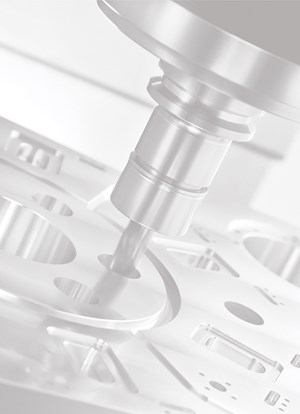Angle Heads’ Bearings Ensure High Stability, Concentricity
Heimatec offers a line of standard and custom angle heads, available in a variety of sizes and styles and designed for heavy milling, deep drilling and tapping applications in the off-highway, energy, rail and other heavy-duty industries.
Share






Heimatec offers a line of standard and custom angle heads, available in a variety of sizes and styles and designed for heavy milling, deep drilling and tapping applications in the off-highway, energy, rail and other heavy-duty industries. These angle heads feature twin or double-twin sets of matched angular contact bearings plus a rear radial support bearing, ensuring maximum stability and concentricity.
All the gears on these angle heads have inclined teeth made of high-resistance gear steel and have been hardened, ground and lapped in sets to provide the smoothest transmission output possible. The angle heads themselves are made of high-tensile-strength aluminum.
The heads provide full 360-degree body rotation with positive compression locking, 90-degree incremental repositioning without indicating, maximum torque to 150 Nm, a 1-1 gear ratio, spindle speeds ranging to 18,000 rpm as well as interchangeable torque arms.
Taper styles available include CAT 40, BT 40, BT 30, HSK 63A, CAT 50, BT 50 and HSK 100A, as well as custom modifications such as 18" extension shafts. Offset, slim, dual and adjustable styles are also available.
Related Content
-
Shop Reclaims 10,000 Square Feet with Inventory Management System
Intech Athens’ inventory management system, which includes vertical lift modules from Kardex Remstar and tool management software from ZOLLER, has saved the company time, space and money.
-
Custom Workholding Principles to Live By
Workholding solutions can take on infinite forms and all would be correct to some degree. Follow these tips to help optimize custom workholding solutions.
-
How to Troubleshoot Issues With Tool Life
Diagnosing when a tool is failing is important because it sets an expectation and a benchmark for improvements. Finding out why gives us a clue for how to fix it.











